[A Profile from the Archives is a series published by Jadaliyya in both Arabic and English in cooperation with the Lebanese newspaper, Assafir. These profiles will feature iconic figures who left indelible marks in the politics and culture of the Middle East and North Africa. This profile was originally published in Arabic and was translated by Mazen Hakeem.]
Baya Mahieddine (aka Fatima Haddad) was an Algerian plastic artist of tribal origin. She was born in 1931 in the town of Bordj El-Kiffan. By the age of five, both her parents had died, so she was raised by her grandmother. She never went to school in her life. Instead, Baya worked in the house of a French artist called Marguerite Camina who took note of her unusual proficiency when creating animal figures out of clay. Camina encouraged her to paint and improve on her nascent talent. She introduced her to colors and the painting kit. Baya held her first exhibition in Paris when she was just sixteen years of age.
During her stay in France, Baya got acquainted with the world of European plastic art and associated with many grand artists like Picasso and Matisse. In 1948, she worked with Picasso for several months. He later painted a collection called "Algeria’s Women." Baya’s paintings left a deep impression on the author André Breton, who wrote about her in the catalog of “Derrière le Miroir” exposition, which featured a number of her paintings and was held in Paris in 1947.
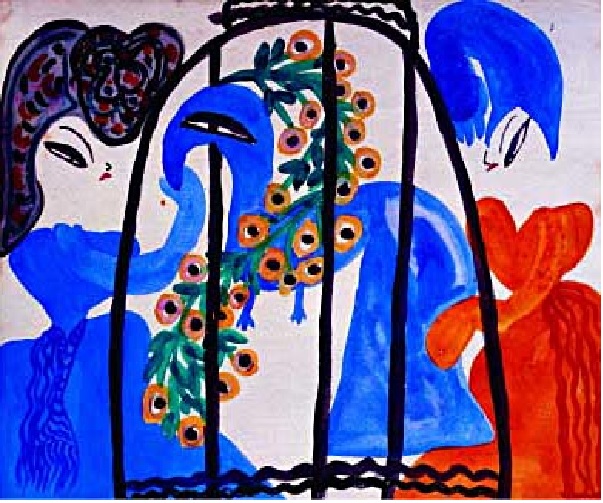
[A Woman and a Bird in a Cage; source: alawan.org website]
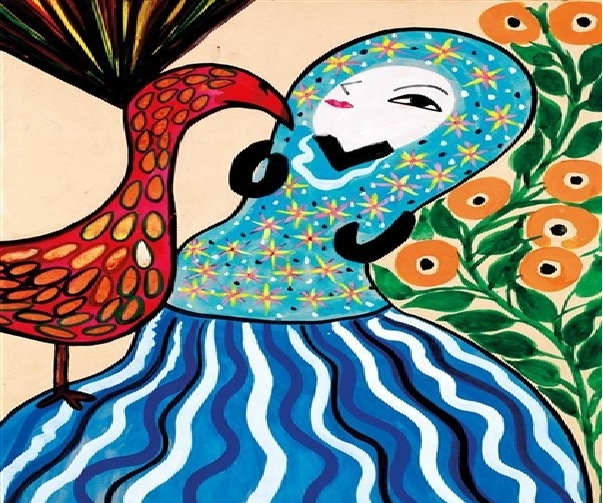
[The Young Lady and the Peacock; source: MutualArt.com website]
Baya got married to the musician and Andalusian composer Mahieddine Mahfoudh in 1953. One year after her marriage, the Algerian revolution erupted and they ceased their artistic activity for almost a decade in solidarity with the revolution. When Baya finally returned to painting after the revolution, she never again ceased to make art until her death in 1998.
Baya’s works in painting, sculpture, and pottery were distinguished by the shapes she derived from her childhood’s imagination and tales. They were dominated by flowers and animals like butterflies, birds, and fish among others. She had her own unique character, which she formulated from the surroundings that she grew up in Algeria. Music, which became part of her world, had an impact on her art. Instruments that her husband used appeared in her paintings and she gave them a special touch. However, the scholars of Western artistic schools, including Breton himself--whom Baya associated with in her beginnings--considered her art surrealistic. This stemmed, according to critics, from the prevailing perspective at the time which was dominated by orientalism and the exoticization of the world that Baya, the woman and artist, came from.
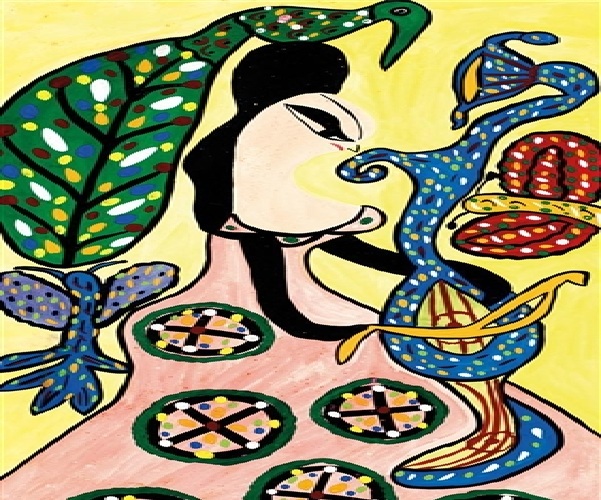
[The Player and the Lute; source: MutualArt.com]
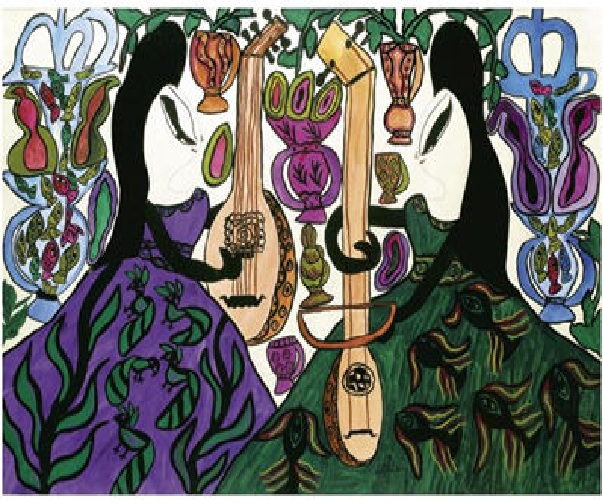
[Source: Askart.com]
Back in Algeria, Baya was considered a prominent artist. Her paintings were featured on postage stamps and expositions were held for her all over the country. The National Museum of Fine Arts in Algiers acquired a number of her works and encouraged her to show her works after the long cessation. Baya insisted on her Algerian origin and art at the same time France was trying to ascribe prominent Algerian artists and attract them as part of the cultural hegemony policy which it followed at the time. Baya also refused an invitation to move to France in the late 1990s when the security situation in Algeria deteriorated and a large number of artists and writers were targeted. She preferred to remain in Algeria than to leave it.
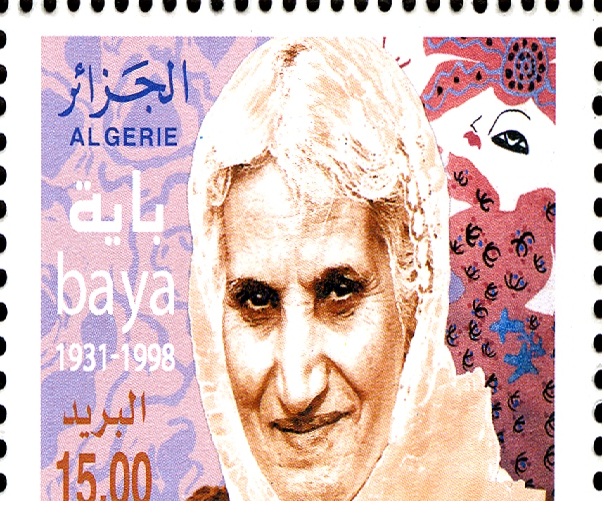
[Baya Mahieddine’s picture on an Algerian postal stamp; source: Universal Postal Union]

[An Algerian postal stamp featuring one of Baya’s paintings; source: Noqta website]
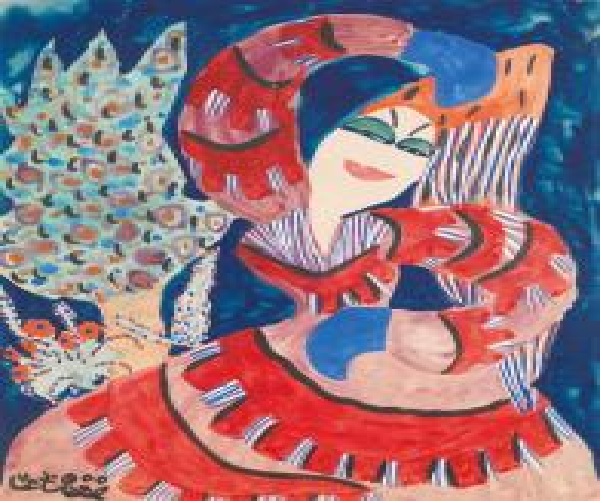
[The Dancer with the Red Dress; source: artfinding.com]
References:
Interview with Othman Mahieddine, Baya’s son, on djazairess.com website, 3 January 2011.
Sana’ Makhoul. “Baya Mahieddine: An Arab Woman Artist,” Detail: A Journal of Art Criticism. Published by the South Bay Area Woman’s Caucus for Art, 6/1 (Fall 1998): 4.